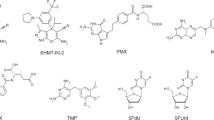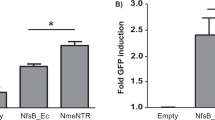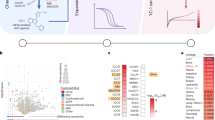Abstract
Gene-directed enzyme prodrug therapy is a promising approach to the local management of cancer and a number of gene prodrug combinations have entered clinical trials. The antitumor activity of Escherichia coli nitroreductase (NTR) in combination with the prodrug CB1954 relies on the reduction of the nitro groups to reactive N-hydroxylamine intermediates that are toxic in proliferating and nonproliferating cells. We examined whether secondary metabolic activation of the N-hydroxylamines by sulfotransferases or acetyltransferases altered cell responsiveness to the drug. We evaluated the coexpression of NTR with the human cytosolic sulfotransferases SULT1A1, 1A2, 1A3, 1E1 and 2A1, or the human arylamine N-acetyltransferases NAT1 and NAT2 on SKOV3 cell survival. Only NAT2 significantly altered the toxicity of CB1954, decreasing the IC50 16-fold from 0.61 to 0.04 μM. These results suggest that one or more of the N-hydroxyl metabolites are a substrate for O-acetylation by NAT2. We also examined the bystander effect of SKOV3 cells expressing NTR or NTR plus NAT2. Addition of the acetyltransferase resulted in a significant decreased bystander effect (P>0.01), possibly due to a lower concentration of reactive metabolites in the culture medium. These results suggest that a combination of bacterial NTR and NAT2 may provide a greater clinical response at therapeutic concentrations of CB1954 provided the reduction in bystander effect is not clinically significant. Moreover, endogenous NAT2, which is localized predominantly in the liver and gut, may be involved in the dose-limiting hepatic toxicity and gastrointestinal side effects seen in patients treated with the higher doses of CB1954.
This is a preview of subscription content, access via your institution
Access options
Subscribe to this journal
Receive 12 print issues and online access
$259.00 per year
only $21.58 per issue
Buy this article
- Purchase on Springer Link
- Instant access to full article PDF
Prices may be subject to local taxes which are calculated during checkout



Similar content being viewed by others
Abbreviations
- CB1954:
-
5-(aziridin-1-yl)-2,4-dinitrobenzamide
- GDEPT:
-
gene-directed enzyme prodrug therapy
- NAT1:
-
N-acetyltransferase
- NTR:
-
nitroreductase
- SULT:
-
sulfotransferase
References
Denny WA . Tumour-activated prodrugs—a new approach to cancer therapy. Cancer Invest 2004; 22: 604–619.
Schepelmann S, Springer CJ . Viral vectors for gene-directed enzyme prodrug therapy. Curr Gene Ther 2006; 6: 647–670.
Chung-Faye G, Palmer D, Anderson D, Clark J, Downes M, Baddeley J et al. Virus-directed, enzyme prodrug therapy with nitroimidazole reductase: a phase I and pharmacokinetic study of its prodrug, CB1954. Clin Cancer Res 2001; 7: 2662–2668.
Cui W, Gusterson B, Clark A . Nitroreductase-mediated cell ablation is very rapid and mediated by a p53-independent apoptotic pathway. Gene Therapy 1999; 6: 764–770.
Knox RJ, Friedlos F, Jarman M, Roberts JJ . A new cytotoxic, DNA interstrand crosslinking agent, 5-(aziridin-1-yl)-4-hydroxylamino-2-nitrobenzamide, is formed from 5-(aziridin-1-yl)-2,4-dinitrobenzamide (CB 1954) by a nitroreductase enzyme in Walker carcinoma cells. Biochem Pharmacol 1988; 37: 4661–4669.
Knox RJ, Friedlos F, Sherwood RF, Melton RG, Anlezark GM . The bioactivation of 5-(aziridin-1-yl)-2,4-dinitrobenzamide (CB1954)—II. A comparison of an Escherichia coli nitroreductase and Walker DT diaphorase. Biochem Pharmacol 1992; 44: 2297–2301.
Helsby NA, Wheeler SJ, Pruijn FB, Palmer BD, Yang S, Denny WA et al. Effect of nitroreduction on the alkylating reactivity and cytotoxicity of the 2,4-dinitrobenzamide-5-aziridine CB 1954 and the corresponding nitrogen mustard SN 23862: distinct mechanisms of bioreductive activation. Chem Res Toxicol 2003; 16: 469–478.
Anlezark GM, Melton RG, Sherwood RF, Coles B, Friedlos F, Knox RJ . The bioactivation of 5-(aziridin-1-yl)-2,4-dinitrobenzamide (CB1954)—I. Purification and properties of a nitroreductase enzyme from Escherichia coli—a potential enzyme for antibody-directed enzyme prodrug therapy (ADEPT). Biochem Pharmacol 1992; 44: 2289–2295.
Tang MH, Helsby NA, Wilson WR, Tingle MD . Aerobic 2- and 4-nitroreduction of CB 1954 by human liver. Toxicology 2005; 216: 129–139.
Minchin RF, Kadlubar FF, Ilett KF . Role of acetylation in colorectal-cancer. Mutat Res 1993; 290: 35–42.
Minchin RF, Reeves PT, Teitel CH, McManus ME, Mojarrabi B, Ilett KF et al. N-acetylation and O-acetylation of aromatic and heterocyclic amine carcinogens by human monomorphic and polymorphic acetyltransferases expressed in cos-1 cells. Biochem Biophys Res Commun 1992; 185: 839–844.
Knox RJ, Friedlos F, Marchbank T, Roberts JJ . Bioactivation of CB 1954: reaction of the active 4-hydroxylamino derivative with thioesters to form the ultimate DNA–DNA interstrand crosslinking species. Biochem Pharmacol 1991; 42: 1691–1697.
Butcher NJ, Arulpragasam A, Minchin RF . Proteasomal degradation of N-acetyltransferase 1 is prevented by acetylation of the active site cysteine: a mechanism for the slow acetylator phenotype and substrate-dependent down-regulation. J Biol Chem 2004; 279: 22131–22137.
McNeish I, Green N, Gilligan M, Ford M, Mautner V, Young L et al. Virus directed enzyme prodrug therapy for ovarian and pancreatic cancer using retrovirally delivered E. coli nitroreductase and CB1954. Gene Therapy 1998; 5: 1061–1069.
Butcher NJ, Ilett KF, Minchin RF . Functional polymorphism of the human arylamine N-acetyltransferase type 1 gene caused by C190T and G560A mutations. Pharmacogenetics 1998; 8: 67–72.
Banoglu E . Current status of the cytosolic sulfotransferases in the metabolic activation of promutagens and procarcinogens. Curr Drug Metab 2000; 1: 1–30.
Gamage N, Barnett A, Hempel N, Duggleby RG, Windmill KF, Martin JL et al. Human sulfotransferases and their role in chemical metabolism. Toxicol Sci 2006; 90: 5–22.
Butcher NJ, Boukouvala S, Sim E, Minchin RF . Pharmacogenetics of the arylamine N-acetyltransferases. Pharmacogenomics J 2002; 2: 30–42.
Wilson W, Pullen S, Hogg A, Helsby N, Hicks K, Denny W . Quantification of bystander effects in nitroreductase suicide gene therapy using three-dimensional cell cultures. Cancer Res 2002; 62: 1425–1432.
Helsby NA, Ferry DM, Patterson AV, Pullen SM, Wilson WR . 2-Amino metabolites are key mediators of CB 1954 and SN 23862 bystander effects in nitroreductase GDEPT. Br J Cancer 2004; 90: 1084–1092.
Kaderlik KR, Minchin RF, Mulder GJ, Ilett KF, Daugaardjenson M, Teitel CH et al. Metabolic-activation pathway for the formation of DNA-adducts of the carcinogen 2-amino-1-methyl-6-phenylimidazo 4,5-B pyridine (Phip) in rat extrahepatic tissues. Carcinogenesis 1994; 15: 1703–1709.
Grove JI, Lovering AL, Guise C, Race PR, Wrighton CJ, White SA et al. Generation of Escherichia coli nitroreductase mutants conferring improved cell sensitization to the prodrug CB1954. Cancer Res 2003; 63: 5532–5537.
Ilett KF, Ingram DM, Carpenter DS, Teitel CH, Lang NP, Kadlubar FF et al. Expression of monomorphic and polymorphic N-acetyltransferases in human colon. Biochem Pharmacol 1994; 47: 914–917.
Ilett KF, Tee LBG, Reeves PT, Minchin RF . Metabolism of drugs and other xenobiotics in the gut lumen and wall. Pharmacol Ther 1990; 46: 67–93.
Ilett KF, Chiswell GM, Spargo RM, Platt E, Minchin RF . Acetylation phenotype and genotype in aboriginal leprosy patients from the north-west region of Western Australia. Pharmacogenetics 1993; 3: 264–269.
Acknowledgements
This study was supported by the National Health and Medical Research Council. CB1954 was a kind gift from Professor William Denny, University of Auckland. The parental SKOV3 cells and the SKOV3-NTR cells were kindly provided by Dr Peter Searle, University of Birmingham.
Author information
Authors and Affiliations
Corresponding author
Rights and permissions
About this article
Cite this article
Mitchell, D., Minchin, R. E. coli nitroreductase/CB1954 gene-directed enzyme prodrug therapy: role of arylamine N-acetlytransferase 2. Cancer Gene Ther 15, 758–764 (2008). https://doi.org/10.1038/cgt.2008.47
Received:
Revised:
Accepted:
Published:
Issue Date:
DOI: https://doi.org/10.1038/cgt.2008.47
Keywords
This article is cited by
-
Enzyme/Prodrug Systems for Cancer Gene Therapy
Current Pharmacology Reports (2016)
-
Development of a novel cell-based assay system EPISSAY for screening epigenetic drugs and liposome formulated decitabine
BMC Cancer (2013)
-
E. coli NfsA: an alternative nitroreductase for prodrug activation gene therapy in combination with CB1954
British Journal of Cancer (2009)



